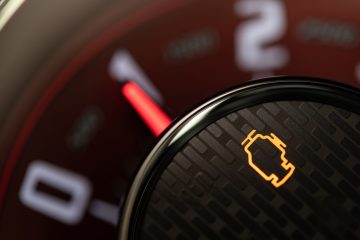With weather getting warmer, workshops are going to see an influx in air conditioning work. Many drivers are likely to have ignored the AC button over the winter months, instead opting for warmer air pumping through their cars.
“No one usually knows if their air conditioning system is working in the winter months, as cold air is generated from outside,” commented Michael Ingvardsen, Global Technical Training manager at Nissens. “That means when they turn the system off and it does not work in the summer, they will want a last-minute fix.”
But is air conditioning still a seasonal item? Or with modern vehicles, is it an all-year round system that will see increased work in all months, not just those warmer periods?
“It has always been the thought that air conditioning was only for summertime,” added Ingvardsen. “It has changed over time because the technology is has become integrated into the vehicle systems. You must remember with the new type of components and systems; it does need to run all the time because it controls itself. It is moving into the age of thermal management, not just a normal air conditioning system, but with heat pumps as well.
Is regassing the first step?
It could be tempting to move a car that comes in for air conditioning work quickly along the process, by conducting a regas. However, this may not solve any deeper issues that lie within the system.
“When we talk about a car that comes into the workshop, of course, if it is low on refrigerant or if it is not performing the way it should, it is always very easy just to regas,” stated Ingvardsen. “But that might not be the reason why it is not working. It could be several other things. So, first and foremost, best practices when it comes to R134a and R1234yf in terms of air conditioning, or R1234yf or CO2 for a heat pump, a pressure test is key.
It Is also worth doing a visual inspection of the gas. A visual diagnostic tool is a sight glass that connects to the low- and high-pressure ports, and you can see the flow of refrigerant going through.
This increases efficiency, because if an air conditioning or heat pump system is not working, the colouration of the oils start to change. It saves time in checking the system, so workshops can diagnose and repair quickly.
So, best practice for workshops is to measure, low pressure, measure high pressure, measure airflow, measure inlet temperature, do a visual inspection, and see if something is leaking.
“Regassing is the last thing you do because that is the thing that you know you must do because the system is low on gas. But you must remember if it is low on gas, there probably is a leak somewhere.”
Gassing about gases
The air conditioning system relies on refrigerant gases, or F-Gas, to work. There are a few types currently on the market, but two main ones stand out. And of these, one is much more sustainable than the other.
“We have different types of air conditioning refrigerants,” commented Richard Groot, Air Conditioning Specialist at DENSO. “We have R134a, which is used in vehicles up until 2017. Since then, all new cars produced in the EU must use R1234yf refrigerant.
“The reason for this is environmental, because of the global warming potential (GWP) and the need to reduce global warming. R134a has a high GWP of 1,430, while R1234yf has a GWP of four. To put this in perspective, CO2 has a GWP of one.
“So, in terms of GWP, R134a has a too high a global warming potential, and that was the reason to change to R1234yf. What we see with electric vehicles is the use of CO2, or R744, in the heat pump system. This works at much higher pressures, and therefore to service these systems, you will need different equipment.
“So, if you want to do a proper service, then you need to understand how to deal with those types of refrigerants,” Groot added.
The trouble with fakes
In 2014, the European Commission decided to control emission from fluorinated greenhouse gases (F-Gases). The EU has adopted two legislative acts, the F-gas Regulation and the Mobile Air Conditioning (MAC) Directive.
The aim of these regulations is to enforce the use of gases with a GWP lower than 150.
In 2015, a Phase Down Schedule was introduced, which will help to gradually reduce the total consumption of high GWP refrigerants such as R134a. In 2030, only one fifth of the total sales volume of 2014 of high GWP HFC’s, should be available on the market.
Only 31% of the total volume of R134a sold in 2014 was available in the market in 2024 as part of this schedule. Due to this reduction, the price of the F-gas has increased. Therefore, the air conditioning market has seen the number of counterfeit and illegal refrigerants increase.
Counterfeit refrigerants are defined as impure, imitation refrigerants that usually consist of blends of already forbidden refrigerants like R12 or R22, to simulate original refrigerants. They are usually sold in disposable cylinders, which have been banned in Europe since 2007, at discounted prices. Trade in counterfeit refrigerants is on the rise and that brings a variety of consequences, varying from poor performance, costly damage to machines and equipment, but most importantly, serious safety hazards resulting in explosions and possible loss of human life.
Therefore, garages need to ensure they are sourcing air conditioning refrigerants such as R134a from reliable and reputable sources and avoid disposable cylinders. Sources should always be verified, and authenticity of the refrigerant should be checked.
Knowledge is key
Air conditioning systems are complex, and with new technologies, they are only going to be more difficult to work in newer vehicles.
“Before getting into air conditioning servicing or repair, it is wise to invest not only in equipment, but also in knowledge,” commented Groot. “With our warranty department, we see a lot of compressors coming in, claims for warranty, where we can tell the customer that it failed because of installation faults. And that is all to do with the lack of knowledge, how to service air conditioning, and how to repair these systems.”
Ingvardsen added: “To attend a training class, and in due time, you should do it in January, February, or March. I fully understand that you also need to change tyres and work on suspension components and other areas during that season, but the problem is that air conditioning is not seasonal anymore.
“I would definitely attend a bigger training class or a longer training class in every second year, because things are evolving fairly quickly now within air conditioning systems, something that has not happened in 30 years, and then every year I would attend just a short training class, an hour or two online or on site, just to get the latest information.”





You must be logged in to post a comment.